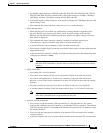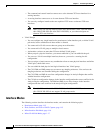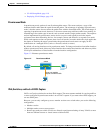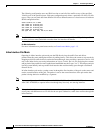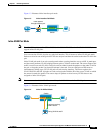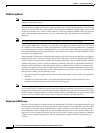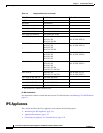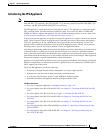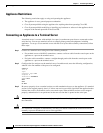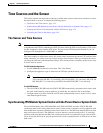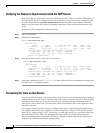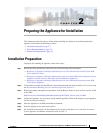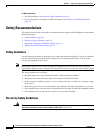
1-21
Cisco Intrusion Prevention System Appliance and Module Installation Guide for IPS 7.1
OL-24002-01
Chapter 1 Introducing the Sensor
IPS Appliances
Introducing the IPS Appliance
Note
The currently supported Cisco IPS appliances are the IPS 4240, IPS 4255, and IPS 4260 [IPS 7.0(x) and
later and IPS 7.1(5) and later], IPS 4270-20 [IPS 7.1(3) and later], IPS 4345 and IPS 4360 [IPS 7.1(3)
and later], and IPS 4510 and IPS 4520 [IPS 7.1(4) and later].
The IPS appliance is a high-performance, plug-and-play device. The appliance is a component of the
IPS, a network-based, real-time intrusion prevention system. You can use the IPS CLI, IDM, IME,
ASDM, or CSM to configure the appliance. For a list of IPS documents and how to access them, refer
to Documentation Roadmap for Cisco Intrusion Prevention System 7.1.
You can configure the appliance to respond to recognized signatures as it captures and analyzes network
traffic. These responses include logging the event, forwarding the event to the manager, performing a
TCP reset, generating an IP log, capturing the alert trigger packet, and reconfiguring a router. The
appliance offers significant protection to your network by helping to detect, classify, and stop threats
including worms, spyware and adware, network viruses, and application abuse.
After being installed at key points in the network, the appliance monitors and performs real-time analysis
of network traffic by looking for anomalies and misuse based on an extensive, embedded signature
library. When the system detects unauthorized activity, appliances can terminate the specific connection,
permanently block the attacking host, log the incident, and send an alert to the manager. Other legitimate
connections continue to operate independently without interruption.
Appliances are optimized for specific data rates and are packaged in Ethernet, Fast Ethernet, and Gigabit
Ethernet configurations. In switched environments, appliances must be connected to the SPAN port or
VACL capture port of the switch.
The Cisco IPS appliances provide the following:
•
Protection of multiple network subnets through the use of up to eight interfaces
•
Simultaneous, dual operation in both promiscuous and inline modes
•
A wide array of performance options—from 80 Mbps to multiple gigabits
•
Embedded web-based management solutions packaged with the sensor
For More Information
•
For a list of supported appliances, see Supported Sensors, page 1-19.
•
For a description of the IPS 4240 and IPS 4255, see Chapter 3, “Installing the IPS 4240 and IPS
4255.”
•
For a description of the IPS 4270-20, see Chapter 5, “Installing the IPS 4270-20.”
•
For a description of the IPS 4345 and IPS 4360, see Chapter 6, “Installing the IPS 4345 and
IPS 4360.”
•
For a description of the IPS 4510 and IPS 4520, see Chapter 7, “Installing the IPS 4510 and
IPS 4520.”
•
For a description of the ASA 5500 AIP SSM, see Chapter 8, “Installing and Removing the ASA
5500 AIP SSM.”
•
For a description of the ASA 5585-X IPS SSP, see Chapter 9, “Installing and Removing the
ASA 5585-X IPS SSP.”



